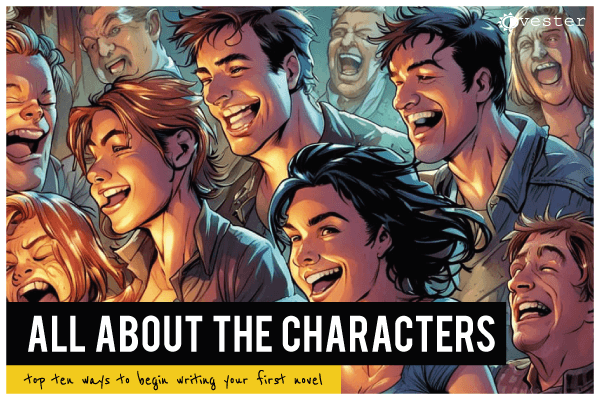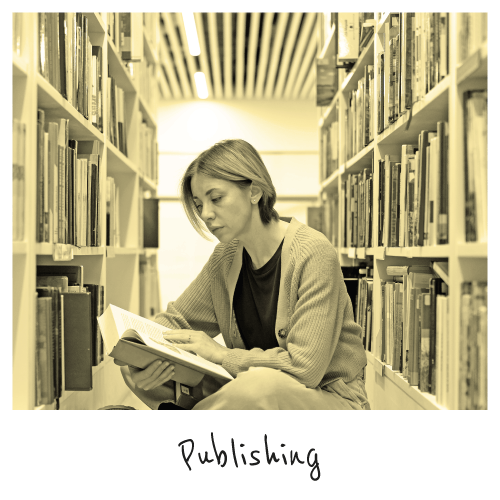If you enjoy reading, it is likely that at some point, you have thought, I could do this. However, for most people, going from a great idea to a published book seems daunting and can often feel overwhelming, especially if you do not know where to start. Most of us are full of the necessary drive and desire to create one or more books, but penning your first is a significant milestone as it usually provides the foundation for your future aspirations. Questions like, how many words and chapters should I write, what font should I use? These are thoughts and questions shared by both experienced and new authors during the creative process.
In the past, many of the technical challenges you will likely face would have been handled by the publisher, as well as guidance on the book’s overall direction and copy and proof editing. With self-publishing gaining popularity, authors now have much more creative freedom, but at the same time, they are required to get more involved in the technical side, including the promotion and publicity of their books. Early in the production process, self-published authors have to consider the various technical aspects, such as which book measurements and fonts to use, whether to use illustrations and industry guidelines, which, for most, can all seem overwhelming. So, let us explore ten of the top methods to help you take your book from an idea to an early draft of your first manuscript.
Before we start with the process, let us look at some statistics:
- Most fictional books are typically made up of three hundred pages and twenty chapters and form between 60 to 100 thousand words
- Books written in English are the most published in the world1. So much so that if you took the total number of books published in the second, third positions (Mandarin and German) and part of the fourth position (Spanish), combining all of their totals, they would equal the same number of those published in the English language
- Printed books (hardback, paperback, etc.) still make up the majority of worldwide sales; however, the demand for eBooks is growing.
- The size of your book will depend on the genre; however, for fiction or novel books, the most common and standard size is 8″ x 5″ (20.32cm x 12.7cm)
- The most common font used in books is Times New Roman with a size of 12 points; however, most true-type (standard) serif or sans serif fonts such as Arial and Courier New can be used
By looking at the statistics, it is easy to approximate the size and structure our book could follow, but also that writing our book in English would place us within the largest sector. Should you be fluent in one or more languages, it is always worthwhile considering whether it is feasible to write your book in another language. Non-English versions of your book could provide you with the necessary edge or advantage, as you will likely be in less competitive markets where a wide range of books are not widely available. It is also clear that you would need to consider producing your book in both a print-ready format as well as compatible with any of the popular eBook formats.
Now we understand a bit more about book structures and formats and publication languages, let us go straight into the tools and techniques for creating your first book.
There are a number of well-tried and tested methods people can follow when creating their first book. A popular methodology is known as the Snowflake method, which is a simple yet effective way to start and develop your novel. It begins with your overall idea and keeps expanding and building from the initial concept through elaborating your story as your book begins to take form. The method takes into consideration your story concept, main characters and the overall plot. The technique is an excellent approach for beginners; however, throughout the top ten tips, we will touch upon similar building blocks in the other tips.
The first part of the process should always involve creating a summary of the overall story or plot, known as an elevator pitch. Imagine someone asking you to explain your book in a short, meaningful way that captures the essence of your story. Likely start with one, but no more than three paragraphs that provide a summary overall description and something that captivates the attention of all those that read or hear it, at the same time, without giving away the overall plot or any twists. In the snowflake method, you would start by creating a simple sentence summarising your story, such as ‘Following the death of his father, a reluctant young prince is thrust into ruling, as his kingdom is on the brink of war.”
Once you have the basis of your story, such as the summary description or elevator pitch, next is to plot out the story, the journey and direction you wish to take the reader, and how you want them to experience the highs and lows of your book. If you think of your story as a timeline, starting from the beginning all the way to the ending, what points or events have taken place to get them from the start to the end? For example, suppose you are writing an adventure story. In that case, you will start by introducing the main character or characters, describing why they are embarking on the journey, and the ending will be them reaching their destination and what they learned. Like in life, there were likely obstacles, challenges, twists and turns along the way, with key events shaping the journey, such as specific characters and places that were pivotal to the story. Beginning to map each milestone or significant event against individual chapters will give you a structure or underlying basis for the story. At this stage, it is only a guideline and may change as you start writing your book. Using the twenty-chapter guideline as your structure will act as a natural timeline in your storytelling, and you may find you need more or less over time.
Most chapters are, on average, anything between one to five thousand words. The number of words is up to you; however, if your chapter is too long, you may find it challenging to keep the readers’ attention. The best approach is to treat each chapter like a mini story with a beginning, middle and ending. The start should be a continuation of the previous section and setting up the scene of the chapter. The story needs to flow, so each chapter needs to continue from the previous one, even if it is only by way of a few paragraphs followed by setting up the scene for that particular chapter. The middle section of the chapter often contains all of the events that lead up to the significant milestone, followed by the ending, which is the mini cliffhanger, to keep the reader engaged. Using the Dark Soul Eater book as an example, the chapter might be something like the young woman experiences a loss; the chapter then describes how she and those around her handle the loss, and the cliffhanger is that she decides she cannot go on. The next chapter could then begin with her seeking out help, and so on.
You are telling a story, but you want your book and the characters within it to be believable. It is common for writers to create character profiles in which they make note of the characteristics and phrases that individual characters might use and the way they will likely handle certain situations. It is said that you should write what you know, so it is usual for writers to adapt their characters from people they know well or have met throughout their lives. Characters within a story will develop over time, and it is important not to overshare or be over-descriptive too early in the book. Think of people you have met in life; you will likely get to know them over time, often through your encounters, each time learning new information about them. When telling a story, you also do not have to be explicit, as some things are often implied. For example, if your main character was a female neurosurgeon, you could describe her in a scene operating on a patient without having to explain her credentials. If her college days were important, they could be incorporated into the story, but her attending college is implied. The best characters are ones that you learn more about through the story, not explicitly, but more about how they interact and react to specific situations and events.
You are telling a story, but you want your book and the characters within it to be believable. It is common for writers to create character profiles in which they make note of the characteristics and phrases that individual characters might use and the way they will likely handle certain situations. It is said that you should write what you know, so it is usual for writers to adapt their characters from people they know well or have met throughout their lives. Characters within a story will develop over time, and it is important not to overshare or be over-descriptive too early in the book. Think of people you have met in life; you will likely get to know them over time, often through your encounters, each time learning new information about them. When telling a story, you also do not have to be explicit, as some things are often implied. For example, if your main character was a female neurosurgeon, you could describe her in a scene operating on a patient without having to explain her credentials. If her college days were important, they could be incorporated into the story, but her attending college is implied. The best characters are ones that you learn more about through the story, not explicitly, but more about how they interact and react to specific situations and events.
So, what do we mean when we say perspective? The perspective in literature relates to the way in which the story is being narrated. As an author, you will need to decide on the approach that works best for you when telling your story. The perspective can be from the first person, describing events, characters and the world around them using the pronouns I, me and my, for example, I saw this, or I said that when talking to the reader. A second-person perspective is a similar approach to the first person, but instead, it is done in a way that includes the reader when describing events surrounding and affecting the main character, using the pronouns, you, your, for example, you saw this, or you said that. The most commonly used is the third person perspective, whether limited to one character at any given time or narrated by an outside, God-like presence, all-seeing and all-knowing, both using the pronouns he, she and they, for example, he said this or she saw that. The genre and style of the book can also affect the perspective; for instance, autobiographies will usually be from the first-person perspective, whereas fictional publications tend to be more third-person.
Depending on the type of book you are writing, with the exception of the front and back cover, very few images are typically used. Most fictional books will generally not feature any images within the main body of the book; however, some notable works have illustrations at the beginning of each chapter. Images can be a great way to reinforce a story and convey a concept or visually elaborate on an aspect of the story; however, as a general rule, they should be in context and relevant to the genre you are writing. Too many images can distract, and in some genres, such as children’s books, it is often expected. The main images that need careful consideration are the front and back sleeve of the book. A visually eye-catching image brings the essence of the story to life and should intrigue someone enough that they pick up your book from the shelve to learn more about it. The front cover is the window to the book, whereas the back is a continuation with an emphasis on the description and summary of the book. When thinking about the artwork, try to list the main points or areas of the story, where it is set, the main character, the plot, unique characteristics, etc.. With the list you have created, try to think of an image that best captures or summarises the essence of the story. It can be tricky, but with modern technology, you could use artificial intelligence (AI) image generators such as Dale 2 to create an image based on a phrase. It might not be an image you use, but it could start the creative thought process that contributes towards the final artwork.
Once you have your structure, sometimes the best thing to do is write. Focus on a single chapter and the part it will play in the plot and begin to write. Very little of whatever you write is likely not going into the final version of the book, but it helps to start structure and form the story and plot. As the famous American novelist and short story writer Ernest Hemingway once said, “The first draft of anything is shit”, so do not be disheartened if what you first write is not a great literary masterpiece; remember, it is just the foundation. The truth is by the end of the process, you will have rewritten, tweaked, read and reread your story so many times that you will be sick of it. The process can be complicated, and you will stop seeing mistakes, but it is all part of the process, and that is what helps to make a manuscript go from good to great. Getting someone to proofread your work, tools such as Grammarly can all help to spot any mistakes you may have made, but ultimately, the process for everyone is the same, write, write and write some more.
The self-publishing and creative writing process can be fun and exciting, giving you much more freedom allowing you to unlock your imagination and create something personal to you. Taking your ideas from a concept to a published manuscript is a significant accomplishment. Not everything you write will be an instant bestseller, but that does not mean you should not try. If a story interests you, then it will likely interest others. If your motivation is making a career out of writing, you will need to spend time researching themes and the latest trends relating to popular books, as specific genres and themes will often see larger sales volumes. Because of how long it takes from concept to final production, you will usually have to predict and have foresight because a trend or theme today might not still be the same when you publish your book.
The process of writing a book can take months, even years, to develop, and the final product will depend on how well you research, build your characters and your overall approach and style to storytelling. The more effort you put into the foundations, characters and structure of your book, the greater chance you have for commercial success. In reality, it took many successful authors years to hone their skills, often publishing many books before they became famous, so you do not need to become disheartened if your book is not an instant hit. Writing books can be challenging, but when your finished book is published, you will feel an immense sense of pride and accomplishment that you have created something and brought something into existence that future generations can hopefully enjoy. If you are planning to write a book, I wish you the best of luck on your journey and hope you enjoy every moment of the creative process.












